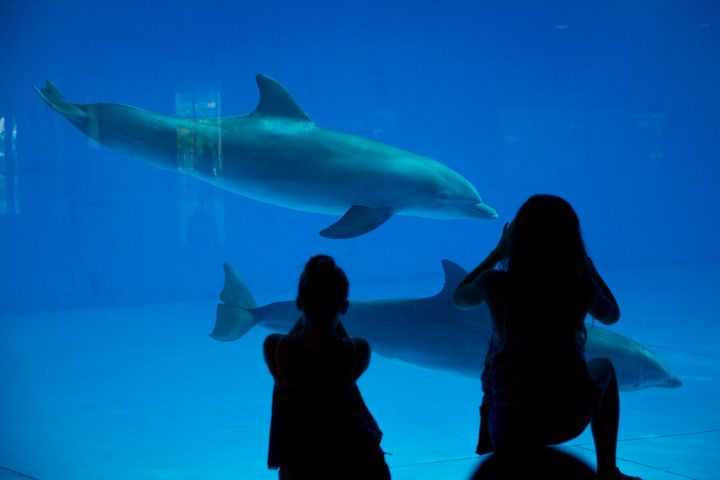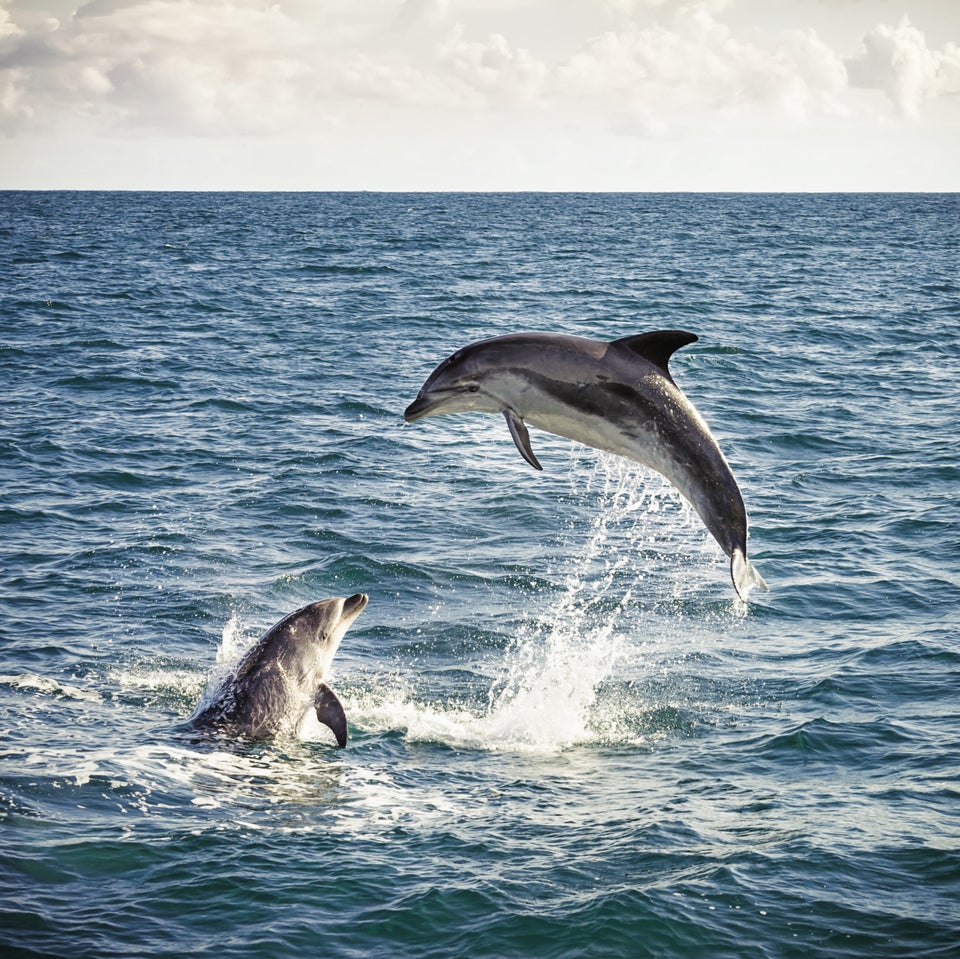Baltimore’s National Aquarium is taking an colossal step toward animal welfare with the creation of a “seaside sanctuary” where it will retire the eight Atlantic bottlenose dolphins in its care.
“We’re creating a new option in a spectrum of options in how humans care for dolphins,” CEO John Racanelli told The Huffington Post. “This is not the easiest, it’s not the cheapest, it’s not even the quickest, but we believe it is the right one.

The aquarium put an end to dolphin performances in 2012, but the animals have remained on display in their tanks, the Associated Press reports.
Racanelli announced Tuesday that the aquarium would be establishing “the nation’s first seaside dolphin sanctuary,” and that the dolphins will be living there by 2020. That means an outdoor, enclosed area of natural sea water, mimicking dolphins’ natural habitat as closely as possible, he explained a Baltimore Sun op-ed. The sanctuary will be in a tropical location which will give the dolphins “significantly more” room than they current have, he wrote. It will also provide them the opportunity to interact with natural fish and plant life.
One reason the process will take so long is that the dolphins need to be gradually transitioned into their new environment, Racanelli said. For instance, seawater contains a huge number of organisms that aren’t present in the dolphins’ current tanks, meaning that once the aquarium chooses a location, seawater from that place will need to be incrementally introduced to make sure the dolphins aren’t shocked when they get to their new home.
The aquarium is also making efforts to ensure that the move itself goes as smoothly as possible,
“We need to work with them to get comfortable with the whole idea that they’re going to go to a truck and get on a plane,” Racanelli said.
In other words, they need to incrementally get the dolphins used to the kind of experiences they’ll go through during the trip.
“One of the transport units sits on the side of the pool now, so that they don’t get freaked out seeing this big object there,” he said. “So you start letting them swim into it, then you pick it up with the crane and put it back down.”
The dolphins also may spend a night in a holding tank outside, to get them used to being in the open air overnight.
In the meantime, he said, they will continue to upgrade and improve the dolphins’ home in the aquarium.
SeaWorld has opposed the idea of “sea sanctuaries” in the past, arguing that a natural environment would be too dangerous for animals accustomed to tanks ― though marine biologist Naomi Rose has called this argument “off-the-charts irrational.”
And the animals at the new sanctuary won’t be on their own ― experts will be present to assist the dolphins in the transition, and that the dolphins will have lifelong access to veterinary care.
So far, officials haven’t selected a site for the sanctuary, but are considering locations in Florida and the Caribbean, and are envisioning an area encompassing “tens of millions or hundreds of millions” of gallons of seawater. (For comparison, the dolphins’ current home has 1.3 million gallons of water.)
The aquarium is not aware of any other place like this, though whale and dolphin advocates have discussed the possibility of such a place in recent years. While Racanelli noted there are places where dolphins live in the ocean under human care, the places he is aware of are not “dolphin-first” sanctuaries ― they’re places where the primary purpose is human entertainment.
While the sanctuary will be publicly accessible ― likely including something like a “discreet observation area” the dolphins’ well-being will always be the number-one priority.
“It certainly won’t be built around the public’s interaction with the dolphins,” he said. He added that scientists would also be able to research and observe the dolphins at the sanctuary.
Last year, toy company Munchkin partnered with the U.K.-based Whale and Dolphin Conservation to pledge $1 million toward an ocean sanctuary for whales, urging Sea World to release their orca Tillikum ― the subject of the documentary “Blackfish” ― to the facility when it’s finished.
The National Aquarium dolphins range in age from 7 to 44. Seven of them were born at the aquarium, while the eighth was captured in the wild in 1972 by a Texas marine park and later transferred to the aquarium. The aquarium no longer breeds dolphins, and will not be breeding the dolphins at the sanctuary.
The decision comes as the public becomes increasingly concerned with the welfare of whales and dolphins in captivity. Animal advocacy groups have long argued these intelligent animals, which live in tightly knit social groups and may swim hundreds of miles a day, simply cannot be confined in tanks or small enclosures humanely.
Racanelli appears to agree.
“With today’s announcement, we are taking the next step, and I am both honored and humbled that our aquarium, a Baltimore institution, is leading the way,” he wrote in The Sun. “Although this decision is about a group of dolphins, it is every bit as much about our humanity; for the way a society treats the animals with whom it shares this planet speaks volumes about us.”
This story has been updated with comments from National Aquarium CEO John Racanelli.

